Cover
Copyright
Contents at a Glance
Table of Contents
Part I: An SQL Concepts Overview
1: Welcome to the World of SQL
SQL Definition and History
SQL Sessions
Types of SQL Commands
The Database Used in This Book
Summary
Q&A
Workshop
Part II: Building Your Database
2: Defining Data Structures
What Is Data?
Basic Data Types
Summary
Q&A
Workshop
3: Managing Database Objects
What Are Database Objects?
What Is a Schema?
Tables: The Primary Storage for Data
Integrity Constraints
Summary
Q&A
Workshop
4: The Normalization Process
Normalizing a Database
Denormalizing a Database
Summary
Q&A
Workshop
5: Manipulating Data
Overview of Data Manipulation
Populating Tables with New Data
Updating Existing Data
Deleting Data from Tables
Summary
Q&A
Workshop
6: Managing Database Transactions
What Is a Transaction?
Controlling Transactions
Transactional Control and Database Performance
Summary
Q&A
Workshop
Part III: Getting Effective Results from Queries
7: Introduction to the Database Query
What Is a Query?
Introduction to the SELECT Statement
Examples of Simple Queries
Summary
Q&A
Workshop
8: Using Operators to Categorize Data
What Is an Operator in SQL?
Comparison Operators
Logical Operators
Conjunctive Operators
Negative Operators
Arithmetic Operators
Summary
Q&A
Workshop
9: Summarizing Data Results from a Query
What Are Aggregate Functions?
Summary
Q&A
Workshop
10: Sorting and Grouping Data
Why Group Data?
The GROUP BY Clause
GROUP BY Versus ORDER BY
CUBE and ROLLUP Expressions
The HAVING Clause
Summary
Q&A
Workshop
11: Restructuring the Appearance of Data
ANSI Character Functions
Common Character Functions
Miscellaneous Character Functions
Mathematical Functions
Conversion Functions
Combining Character Functions
Summary
Q&A
Workshop
12: Understanding Dates and Times
How Is a Date Stored?
Date Functions
Date Conversions
Summary
Q&A
Workshop
Part IV: Building Sophisticated Database Queries
13: Joining Tables in Queries
Selecting Data from Multiple Tables
Understanding Joins
Join Considerations
Summary
Q&A
Workshop
14: Using Subqueries to Define Unknown Data
What Is a Subquery?
Embedded Subqueries
Correlated Subqueries
Subquery Performance
Summary
Q&A
Workshop
15: Combining Multiple Queries into One
Single Queries Versus Compound Queries
Compound Query Operators
Using ORDER BY with a Compound Query
Using GROUP BY with a Compound Query
Retrieving Accurate Data
Summary
Q&A
Workshop
Part V: SQL Performance Tuning
16: Using Indexes to Improve Performance
What Is an Index?
How Do Indexes Work?
The CREATE INDEX Command
Types of Indexes
When Should Indexes Be Considered?
When Should Indexes Be Avoided?
Altering an Index
Dropping an Index
Summary
Q&A
Workshop
17: Improving Database Performance
What Is SQL Statement Tuning?
Database Tuning Versus SQL Statement Tuning
Formatting Your SQL Statement
Full Table Scans
Other Performance Considerations
Cost-Based Optimization
Performance Tools
Summary
Q&A
Workshop
Part VI: Using SQL to Manage Users and Security
18: Managing Database Users
User Management in the Database
The Management Process
Tools Utilized by Database Users
Summary
Q&A
Workshop
19: Managing Database Security
What Is Database Security?
What Are Privileges?
Controlling User Access
Controlling Privileges Through Roles
Summary
Q&A
Workshop
Part VII: Summarized Data Structures
20: Creating and Using Views and Synonyms
What Is a View?
Creating Views
WITH CHECK OPTION
Creating a Table from a View
Views and the ORDER BY Clause
Updating Data Through a View
Dropping a View
Performance Impact of Using Nested Views
What Is a Synonym?
Summary
Q&A
Workshop
21: Working with the System Catalog
What Is the System Catalog?
How Is the System Catalog Created?
What Is Contained in the System Catalog?
System Catalog Tables by Implementation
Querying the System Catalog
Updating System Catalog Objects
Summary
Q&A
Workshop
Part VIII: Applying SQL Fundamentals in Today's World
22: Advanced SQL Topics
Cursors
Stored Procedures and Functions
Triggers
Dynamic SQL
Call-Level Interface
Using SQL to Generate SQL
Direct Versus Embedded SQL
Windowed Table Functions
Working with XML
Summary
Q&A
Workshop
23: Extending SQL to the Enterprise, the Internet, and the Intranet
SQL and the Enterprise
Accessing a Remote Database
SQL and the Internet
SQL and the Intranet
Summary
Q&A
Workshop
24: Extensions to Standard SQL
Various Implementations
Example Extensions
Interactive SQL Statements
Summary
Q&A
Workshop
Part IX: Appendixes
APPENDIX A: Common SQL Commands
SQL Statements
SQL Clauses
APPENDIX B: Using the Databases for Exercises
Windows Installation Instructions for MySQL
Windows Installation Instructions for Oracle
Windows Installation Instructions for Microsoft SQL Server
APPENDIX C: Answers to Quizzes and Exercises
APPENDIX D: CREATE TABLE Statements for Book Examples
APPENDIX E: INSERT Statements for Data in Book Examples
APPENDIX F: Glossary
A
B
C
D
E
F
G
H
I
J
K
N
O
P
Q
R
S
T
U
V
APPENDIX G: Bonus Exercises
INDEX
A
B
C
D
E
F
G-H
I
J-K
L
M
N
O
P
Q
R
S
T
U
V
W-Z
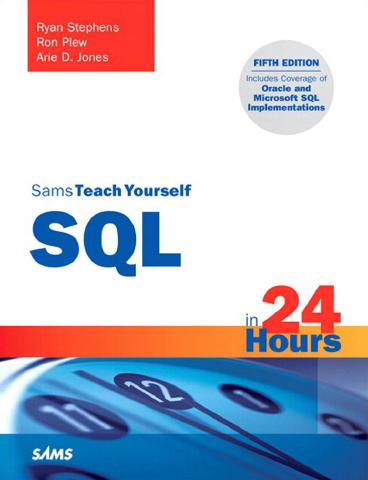
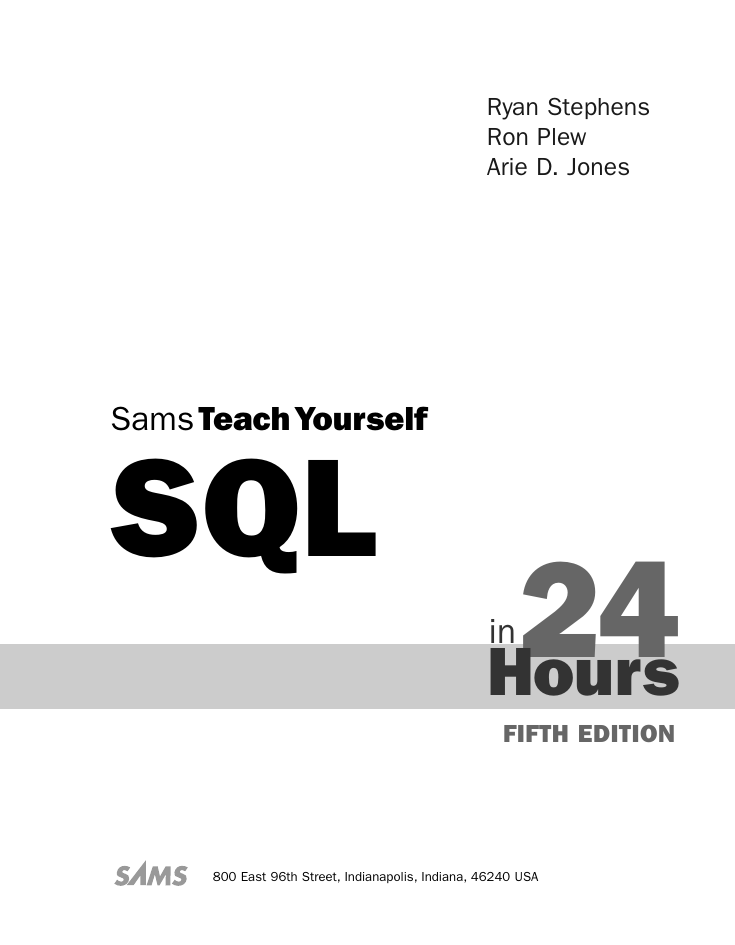

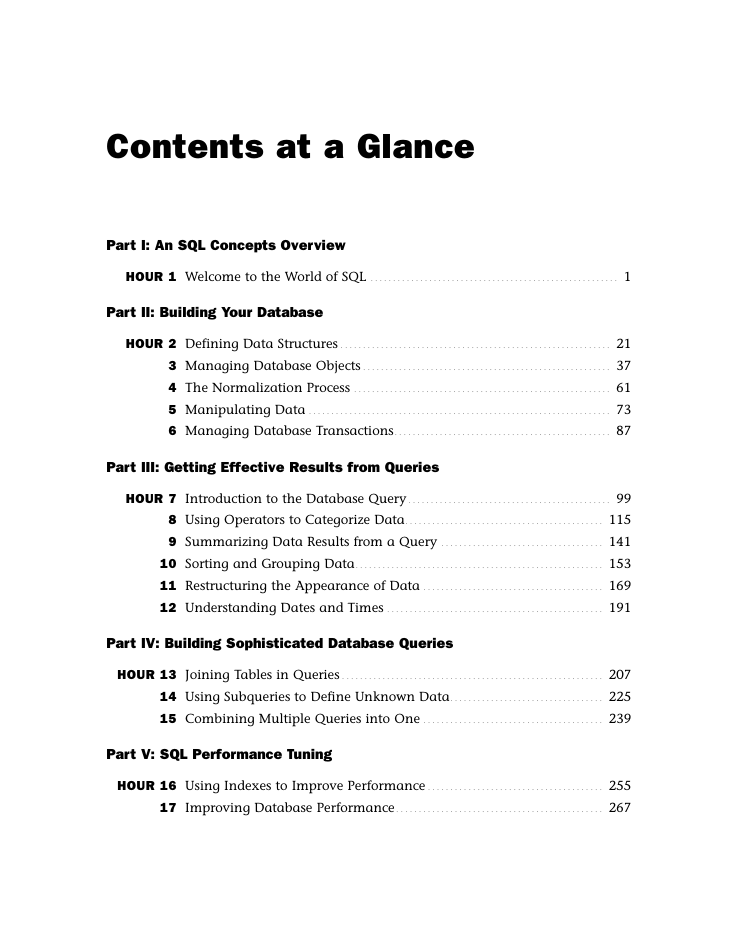

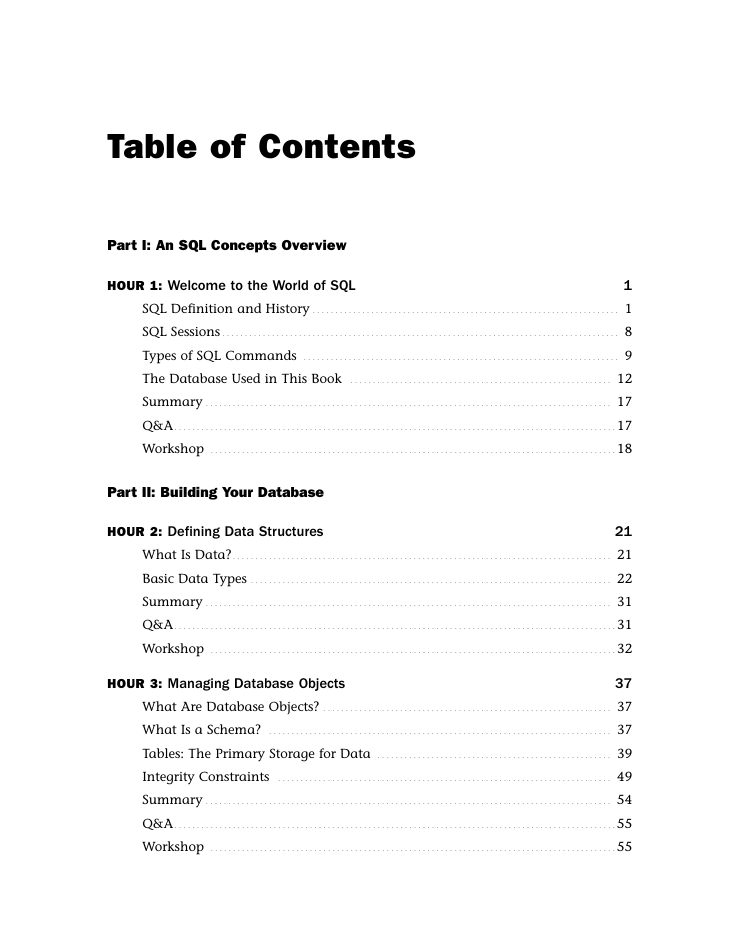
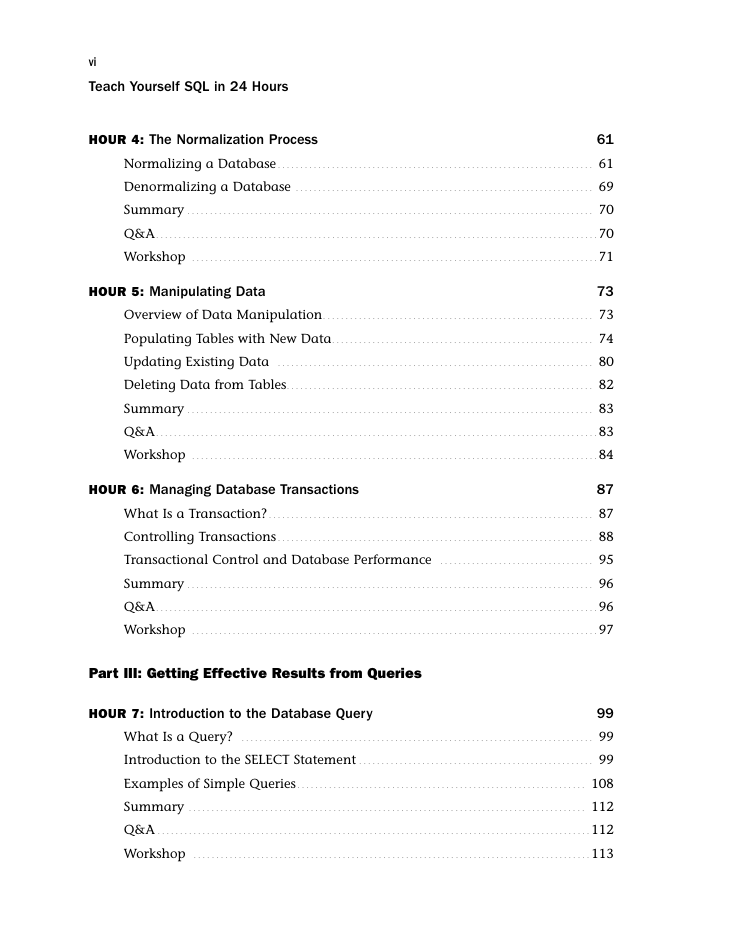









 2023年江西萍乡中考道德与法治真题及答案.doc
2023年江西萍乡中考道德与法治真题及答案.doc 2012年重庆南川中考生物真题及答案.doc
2012年重庆南川中考生物真题及答案.doc 2013年江西师范大学地理学综合及文艺理论基础考研真题.doc
2013年江西师范大学地理学综合及文艺理论基础考研真题.doc 2020年四川甘孜小升初语文真题及答案I卷.doc
2020年四川甘孜小升初语文真题及答案I卷.doc 2020年注册岩土工程师专业基础考试真题及答案.doc
2020年注册岩土工程师专业基础考试真题及答案.doc 2023-2024学年福建省厦门市九年级上学期数学月考试题及答案.doc
2023-2024学年福建省厦门市九年级上学期数学月考试题及答案.doc 2021-2022学年辽宁省沈阳市大东区九年级上学期语文期末试题及答案.doc
2021-2022学年辽宁省沈阳市大东区九年级上学期语文期末试题及答案.doc 2022-2023学年北京东城区初三第一学期物理期末试卷及答案.doc
2022-2023学年北京东城区初三第一学期物理期末试卷及答案.doc 2018上半年江西教师资格初中地理学科知识与教学能力真题及答案.doc
2018上半年江西教师资格初中地理学科知识与教学能力真题及答案.doc 2012年河北国家公务员申论考试真题及答案-省级.doc
2012年河北国家公务员申论考试真题及答案-省级.doc 2020-2021学年江苏省扬州市江都区邵樊片九年级上学期数学第一次质量检测试题及答案.doc
2020-2021学年江苏省扬州市江都区邵樊片九年级上学期数学第一次质量检测试题及答案.doc 2022下半年黑龙江教师资格证中学综合素质真题及答案.doc
2022下半年黑龙江教师资格证中学综合素质真题及答案.doc